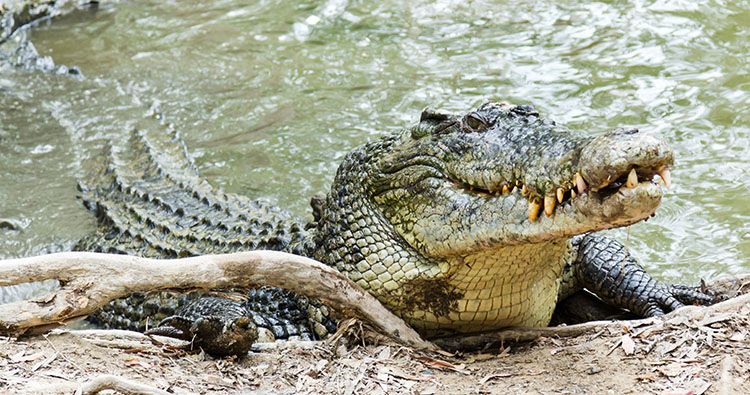Don’t Swim with the Salties!
Monster Monday
Monday, November 23, 2015
Crocodiles and alligators are feared denizens of rivers and swamps, but one croc is king of them all. The saltwater crocodile (Crocodylus porosus) is the largest living reptile and one of the most fearsome predators on Earth. It is found on the coasts of northern Australia and Southeast Asia and all the islands between.

The saltwater crocodile is the largest living reptile and one of the most fearsome predators on Earth. Credit: © Meister Photos/Shutterstock
As their name suggests, “salties” are comfortable in salt water. They are often found in brackish (salty) estuaries and pools. They have been seen swimming in the ocean far from shore, apparently moving to and from different islands. The crocs have no trouble in fresh water, however, and also lurk in rivers and swamps.
Though only about 1 foot (30 centimeters) long at birth, saltwater crocodiles can reach lengths of 23 feet (7 meters) as adults. Their skulls contain dozens of sharp teeth and can approach 3 feet (1 meter) long. Adult saltwater crocodiles have one of the strongest bites in the animal kingdom. They can slam their jaws shut with some 3,700 pounds per square inch (16,500 newtons) of force. In contrast, human bite force is only about 200 pounds per square inch (900 newtons).
Like most crocodiles, salties usually ambush their prey near the water’s edge. Young animals will eat insects and small fish. As they grow, saltwater crocs attack increasingly larger prey, including sharks and water buffalo. Large adults may attack humans if they get the chance.
Because they present a danger to humans, saltwater crocodiles are sometimes feared and hated by local people. In northern Australia, they were hunted almost to extinction before a 1970 hunting ban enabled populations to recover. Like most other crocodiles (and many other plant and animal species), salties are threatened by hunting, invasive species, habitat destruction, and pollution. In areas where salties live, it is important to educate locals and visitors on how to avoid attacks. Such education may save the lives of crocodiles as well as humans, because killer crocs are often hunted down by local governments or vengeful communities.


